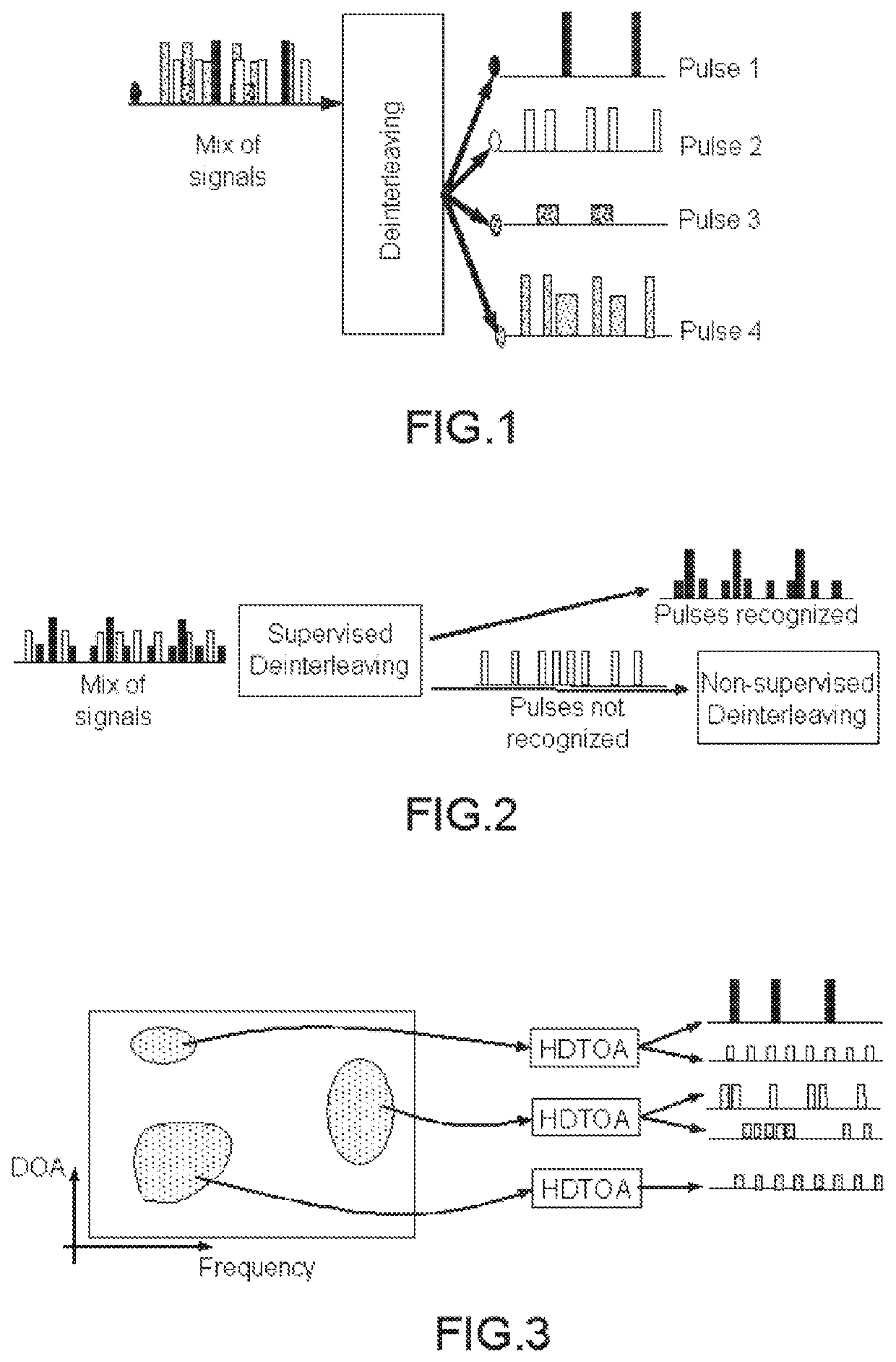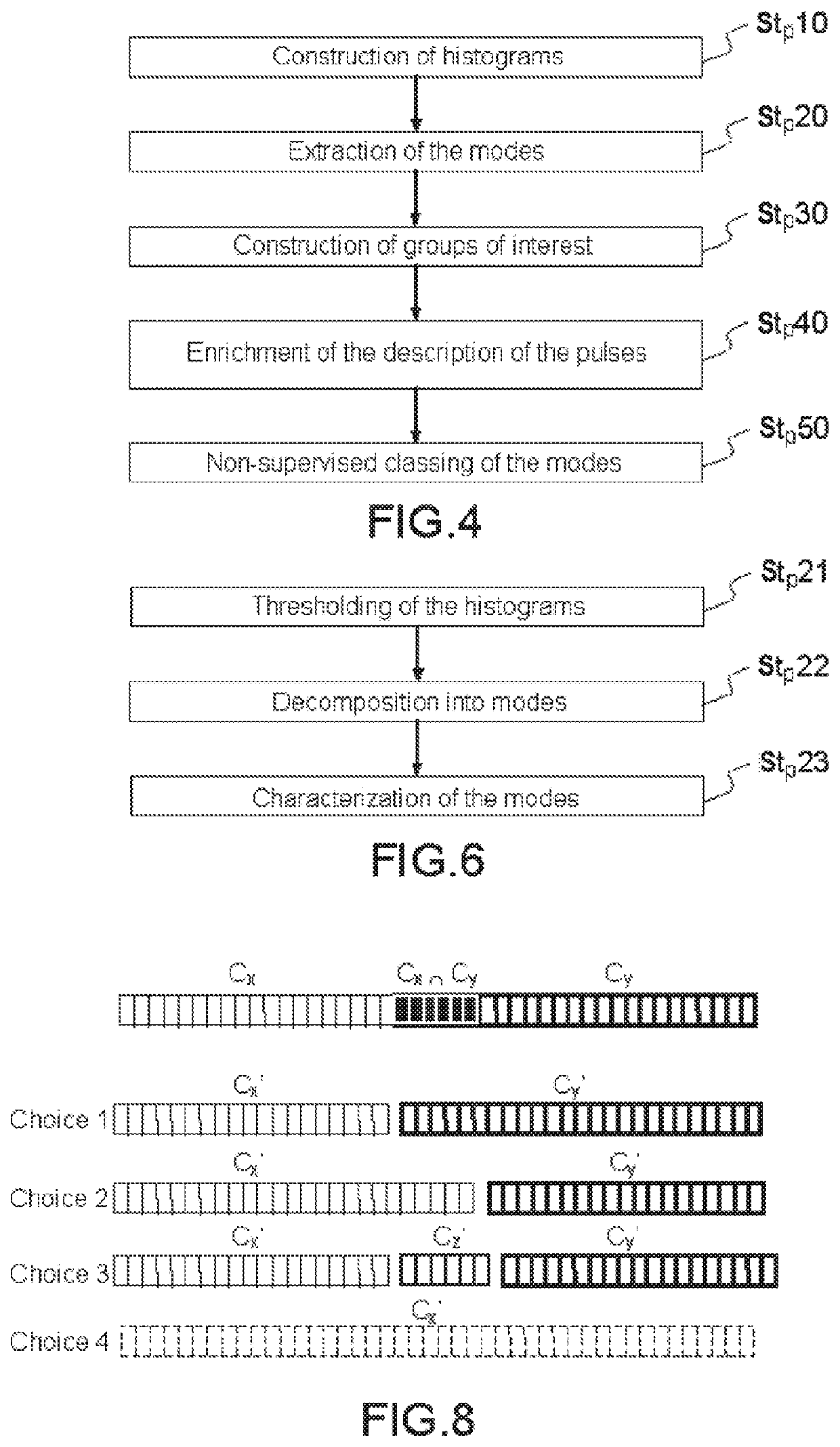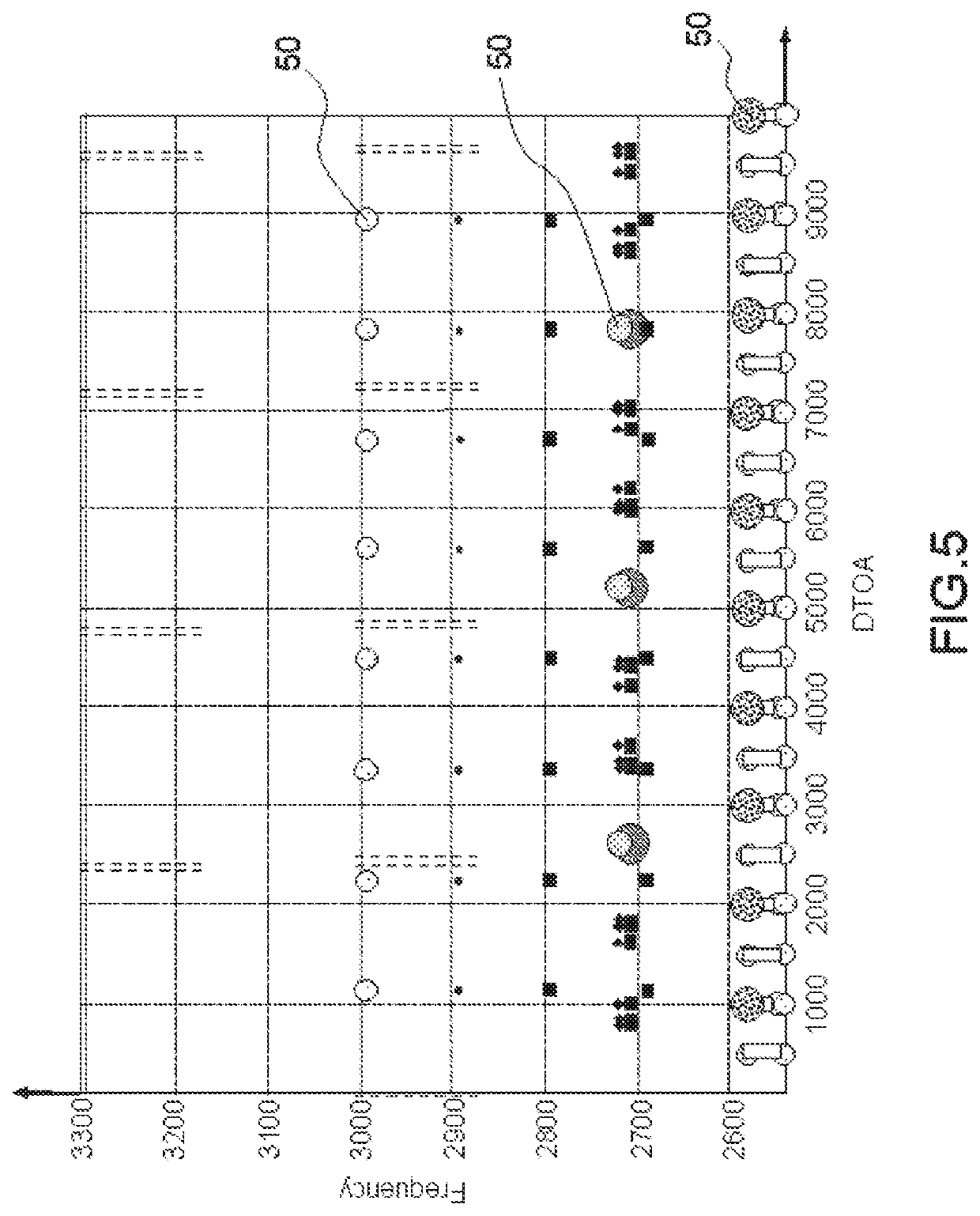Method for non-supervised deinterleaving by N-dimensional enrichment
- Summary
- Abstract
- Description
- Claims
- Application Information
AI Technical Summary
Benefits of technology
Problems solved by technology
Method used
Image
Examples
Embodiment Construction
[0091]The method of non-supervised deinterleaving by N-dimensional enrichment according to the invention relies on the conjoint use of the primary parameters and secondary parameters such as for example the difference of time of arrival (DTOA) to separate each emission of interest.
[0092]With reference to FIG. 4 the deinterleaving method according to the invention can comprise a step Stp10 of constructing histograms, a step Stp20 of extracting modes, a step Stp30 of constructing groups of interest, a step Stp40 of enriching the description of the pulses and a step Stp50 of non-supervised classing of the modes.
[0093]In the course of the step Stp10 histograms are constructed in all the dimensions. This step makes it possible to carry out a conjoint multidimensional description (frequency, DTOA, DOA, phase of the temporal trains, intra-pulse parameters, PW . . . ) of a set of pulses. This conjoint description makes it possible in particular to construct histograms relating primary param...
PUM
 Login to View More
Login to View More Abstract
Description
Claims
Application Information
 Login to View More
Login to View More - R&D
- Intellectual Property
- Life Sciences
- Materials
- Tech Scout
- Unparalleled Data Quality
- Higher Quality Content
- 60% Fewer Hallucinations
Browse by: Latest US Patents, China's latest patents, Technical Efficacy Thesaurus, Application Domain, Technology Topic, Popular Technical Reports.
© 2025 PatSnap. All rights reserved.Legal|Privacy policy|Modern Slavery Act Transparency Statement|Sitemap|About US| Contact US: help@patsnap.com



